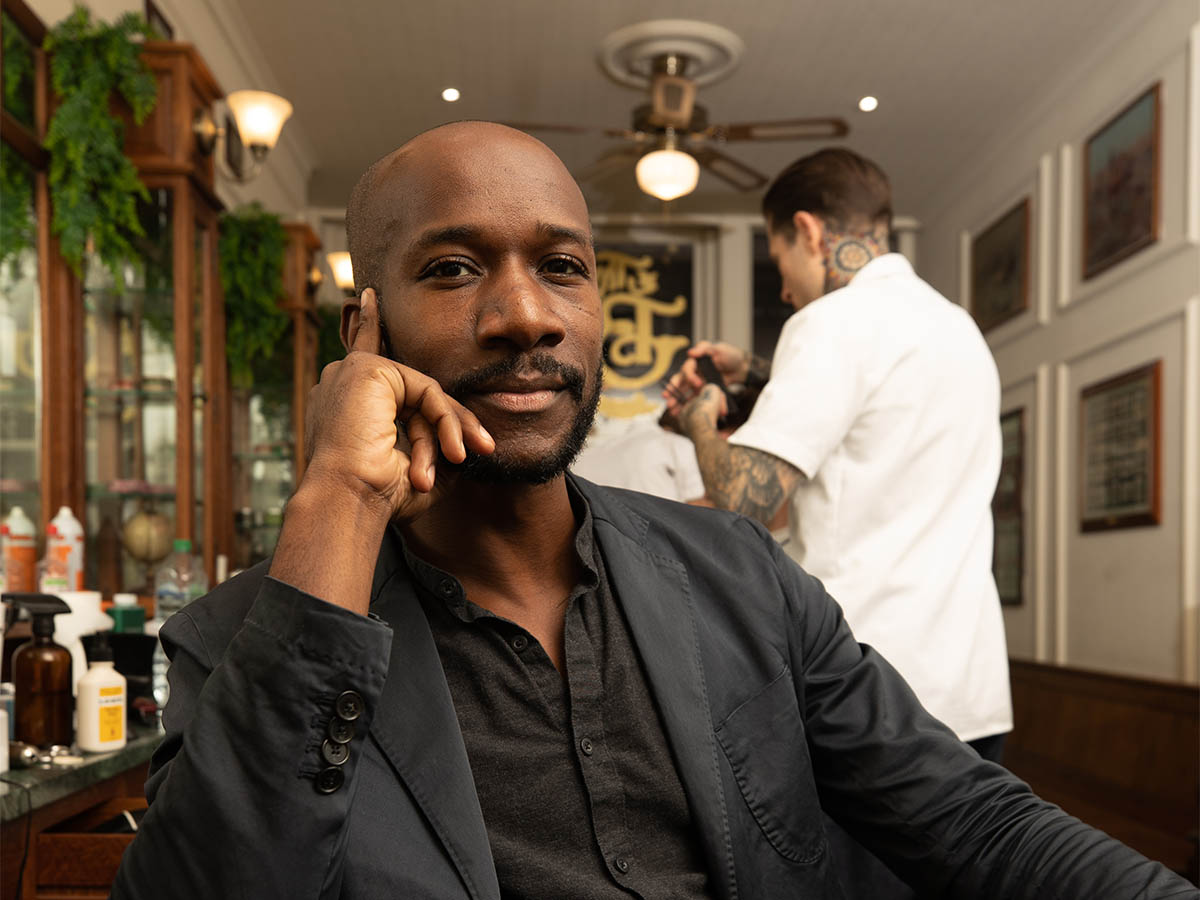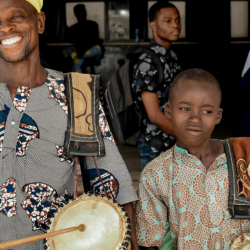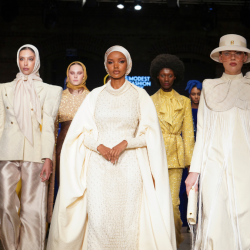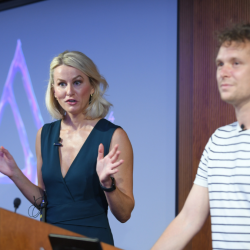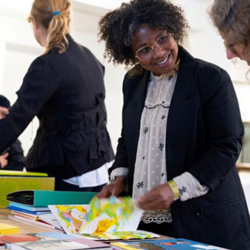Just pinning Dino Myers-Lamptey down for an interview is a mission in itself. It’s not that he’s not willing to give of his time. Our interview overran quite significantly and this urbane ad exec spoke fulsomely and engagingly about all manner of things careers and media. It’s just that he seems to pick up a new title every week to add to his impressive clutch and one worries he might be spreading himself a bit thin.
“I can keep it up with the support of other people,” he reassures me. “With technology, you can get a lot more achieved with people who say yes and support things. If you’ve got access to good quality people, you can achieve a lot more.”
His range of commitments and schedule seems punishing nonetheless, with projects involving the Alliance of Independent Agencies working towards developing training and guidance in the industry, work with the Brixton Finishing School to bring 18-25 year-olds into the advertising sector and a number of speaking and judging engagements. Not to mention he has a full-time job overseeing work at his own strategy-led media, creative and tech agency, The Barber Shop.
The trick is, he says, allying yourself with people who aren’t just keen to help, but have the mindset to get moving and the power to sign off. “Ally Owen [founder of the Brixton Finishing School] is a real doer. She has ideas, is up for doing them and gets going. Similarly with the Alliance. I was amazed by how quickly [people] were open to the idea and saying yes and going ahead with things.”
Make things happen
He notes that this is one of the fundamental differences in working for bigger agencies rather than independents. The founders of the latter tend to have the ability to say yes to things, to make things happen.
This isn’t a casual observation. Myers-Lamptey has worked in both global, corporate media behemoths and small independents, taking the best of both worlds with him as he has moved through his career.
“If there was any conscious part about it, when I started in my career, I chose a big, established company because my perception was that this was a bigger place, going in a bigger direction.” He notes that, in the early stages of peoples’ careers, training and guidance are stand out benefits and he agrees that this is still true today.
“I would say to this day that if you’re starting a career, you want to start in a place like that.” By ‘that’, he means Mediacom, his first big media opening and one where, he says, “you’re most able to ask those dumb questions.” Dumb questions come with the territory when you’re starting out, but Myers-Lamptey adds that another one of the benefits of working for a large organisation is the way junior members are sort of ‘swept along’ with the tide of progress including landing on training courses rather than having to take control of your own career progression.
But, while a degree of care – cosseting, even – is nice, Myers-Lamptey warns that it can lead to being swept into a niche and mindset that become increasingly hard to get out of. “Many people follow a path where it’s just too tempting to get the next job in line.”
Success is a state of mind
Myers-Lamptey has made something of a habit of not getting the next job in line. He has gone from big agency to small and back again, from planner to strategist to MD then entrepreneur. He has noted that it wasn’t just him taking a chance during these manoeuvres. His employers had to take a leap of faith too.
“There are certain roles where technical skills are needed such as digital buying and programmatic, but people often overestimate how well staff need to know how to use those tools at the outset. Appetite and ability to learn are the most important things, particularly for most creative and strategic roles.”
He realised that, in a big agency, landing on accounts he hankered after joining or developing a particular skills path was going to be by luck rather than design. So, in joining a smaller shop, he could take on the strategy role he so craved – even though it meant a drop in salary. This sort of tactic is often advised against by recruiters, perhaps seen as candidates not being sure or not being able to justify their worth. Quite the reverse, says Myers-Lamptey.
“When I see a CV that says the person wants to get into strategy, if they’re currently doing something very different, they have something in them that they need to get out. To say they’re taking a drop is a big statement of self-belief. Every single time I’ve seen someone do that, they ended up being better than the people who had carved the obvious path. They’re taking different world experiences and bringing them to the table. The last thing you want is people to be thinking the same.”
Diverse inspiration
And, he points out, the media landscape is becoming hugely demanding. To get ahead, you simply cannot afford to keep ploughing the same furrow. “The evolution of the ad business and advertising as a thing is that it’s becoming a less powerful tool to persuade customers to engage. For ad agencies to stay relevant, they have to think about how to solve problems in other ways – if clients give them permission to. The best places work differently.”
Myers-Lamptey points to the music industry as an excellent model to follow – a place he says creativity “has escaped to”. He suggests that it is diverse and wild and there is something for everyone. But, he adds, “you never get a record label saying we have everything in house. The output would be terrible. When you go find your guitarist and writer and come up with completely new collaborations, that’s true creativity.”
If the industry is getting its head around atypical career paths and approaches to problem solving, there remains one giant capability gap that, despite its high profile of late seems no nearer to being closed.
“It’s hard not to talk about the issue of diversity and representation in the industry at the moment. It’s a conversation that needs to be had and it’s been had at greater intensity of late but the jury’s out over progress made,” Myers-Lamptey warns. “There are pockets of initiatives but people don’t get that it’s not down to one person. It’s a cultural think that we’ve got to stand up and make sure this is right. It’s disappointing how many businesses are not holding themselves to account.”
He adds that this is not a social policy, but a business decision that is currently being badly made. “Anyone who is creative and understands what creativity can bring through different eyes – looking at it purely from a rational perspective – it’s massively important.”
Looking for talent in all the wrong places
He also holds no truck with the meeker voices who might protest that it is, in some way, ‘hard’ to find the necessary diverse talent to redress the balance and access that creativity. “I’m amazed by how necessary it seems to be to direct people towards things like that. Most people have not been conscious of it being a problem to solve. So, when it comes down to the day-to-day and there is a position to fill, it never occurs to get a diverse list to correct the balance.”
What Myers-Lampey is referring to is the disconnect between how companies may understand the need to employ a more diverse workforce, but their process for accessing it has never changed. What’s that they say about the definition of insanity? Doing the same thing over and over again, and expecting different results?
“The brief goes out to the recruitment people they typically use and nowhere in the brief is anything mentioned about the diversity problem or targets. They get a bunch of candidates back and realise all a bit late that the candidates are a bit useless [in meeting D&I targets].”
It’s one of those things that is blindingly obvious when you think about it and yet so few people do – think about it, that is. “It’s different with gender because that’s usually obvious from the CV, but not for ethnicity.” Myers-Lamptey adds that people will often come to him, asking for recommendations for hires but would never ask him about a particular ethnicity. “Anyone that I know who is struggling with it, they can ask me.” He points to the growing number of lists highlighting top BAME talent in media and adland as helpful.
The answer, he admits, is not simple but a good start could be made from a single action: “The lack of diversity client side in marketing departments is the sleeping tiger. We drastically need discussion there. It’s the quickest way to change. Agencies will change when there are more people on that side.” And Myers-Lamptey’s final call isn’t to the D&I team, it’s to all marketers both agency and client side: “If you’re not taking responsibility to elevate that more diverse workforce, what are you doing?”




















